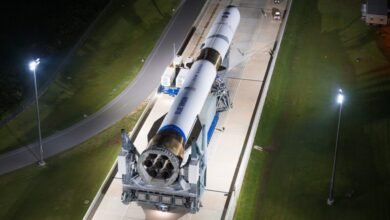NASA Closes Columbia Artifact Repository to Public Tours

▼ Summary
– NASA is changing how employees engage with the memory of the 2003 Columbia space shuttle tragedy by creating a new facility.
– The Columbia Learning Center (CLC) will be accessible to all Kennedy Space Center employees without restrictions, replacing the previous limited-access program.
– The CLC aims to inspire and remind employees of the importance of diligence in their work for future generations.
– Columbia broke apart during re-entry due to launch damage, resulting in over 85,000 pieces of debris instead of landing as planned.
– The disaster claimed the lives of all seven crew members: Rick Husband, Willie McCool, David Brown, Kalpana Chawla, Michael Anderson, Laurel Clark, and Ilan Ramon.
NASA is transforming how its workforce engages with the legacy of one of its most profound tragedies, ensuring that the lessons from the past continue to inspire and guide future missions. The agency has decided to close public access to the Columbia artifact repository, shifting its focus toward creating a dedicated internal space for employee reflection and education.
Following the devastating loss of the space shuttle Columbia and its STS-107 crew in 2003, NASA established a program to utilize the orbiter’s recovered debris for research and educational purposes at Kennedy Space Center. For years, agency personnel could view these remnants as a sobering reminder of the critical importance of diligence and safety in their work. However, logistical challenges and the facility’s location limited broader access.
To make this experience available to more employees, NASA has begun developing a new on-site facility designed specifically for its workforce. The Columbia Learning Center (CLC) will offer unrestricted access to all Kennedy personnel, allowing them to visit at any time and reflect for as long as needed. A NASA spokesperson emphasized that the center aims to provide ongoing inspiration and reinforce core mission values for generations to come.
The original repository housed tens of thousands of fragments recovered after the orbiter broke apart during re-entry over East Texas on February 1, 2003. What was meant to be a routine landing following a 16-day scientific mission ended in catastrophe due to damage sustained during launch. The disaster took the lives of all seven crew members: Commander Rick Husband, Pilot Willie McCool, Mission Specialists David Brown, Kalpana Chawla, Michael Anderson, and Laurel Clark, as well as Payload Specialist Ilan Ramon of Israel.
(Source: Ars Technica)



